How well does your workplace respond to an emergency? It is a well-established fact that companies which are not compliant in terms of first aid readiness are more likely to suffer grave repercussions.
This is from both business and legal perspectives. The hours of manpower lost and cost of healthcare can actually be minimal compared to monetary penalties imposed by government agencies for non-compliance to set rules.
Contributor Katrina McKinnon explains further….
The WHS Act mandates any business or enterprise to conform to standards set forth in first aid. It includes guidelines for:
- first aid training
- anticipation and response to a disaster or emergency.
The acts bestow upon any organisation the crucial duty to ensure the safety of workers and other persons involved in its operations.
How Do You Stay on Top of First Aid Matters?
Whether your work area is located outdoors, or it is mobile or remote, a definite plan is required by the WHS Act. This act discusses all the procedures and mechanics of abiding legally to every aspect of first aid operation and maintenance.
Here are some of the major guidelines on how to be first aid compliant:
1. Make a Total Assessment of your Work Area
It is imperative that you know the history and geology of your workplace. By history, we mean, that you research on the location’s past disasters and emergencies. That is why it is helpful to have first aid injury registry. This will certainly help you a lot in preparing for your own action plans. Ask the basic questions:
How did it happen – knowing facts about how the incident/emergency/disaster started will give you a basis for your strategic plan. You can, therefore, make a proactive approach to your emergency response. It is always best to make a conscious effort to prevent things from happening rather than planning for events as they happen.
What has been done – in relation to the earlier question, investigate the measures conducted to address the situation. You can then improvise and make a more detailed action plan. They say to learn from mistakes – capitalise on this notion.
Who are the personnel involved – as with the “how” and “what”, it is also as important to ask the “who”. Who were the personnel involved?
These are the key questions that will make you realise critical matters pertaining to what you could have done differently.
2. Create a Plan
Now that you have an idea about your workplace’s past, it is time to delve into the present. Preparation is the key for any endeavour and first aid is no different in that regard. To become WHS compliant means having the following:
An Evacuation Plan – every business is required to present a detailed evacuation procedure. Make a list of all possible scenarios, the data you acquired from your investigation will help you with your outline.
Evacuation Procedure – a plan is but a piece of paper unless executed correctly. Practice makes perfect, so they say. Regularly implement drills at any given time, especially for every season. The same place in your work area may not be a good evacuation point in the winter but is a great one in the summer.
Your Key Personnel – assigning a point person during emergency situations is critical in every plan. They need to be well equipped with knowledge acquired through relevant training. These are the people who will oversee your evacuation procedures and are the first to react to any given emergency.
The size of your company’s population determinates the number of key personnel you are going to assign. As per Regulation 42 of the WHS Act, the following ratio should be observed (first aider to number of employees):
- Low-Risk Workplaces 1:50
- High-Risk Workplaces 1:25
3. Prepare The First Aid Kit
Drop the typical notion of a regular first aid kit containing medicine and bandages. Aside from what you normally find inside, an ideal first aid kit contains a cellular phone, a portable radio, a torch, spare batteries, and plastic bags.
Depending on the nature of your work or industry, your kit may require additional items that conform to your particular needs.
Emergency contact numbers should also be included in the kit even if they are already in the cellular phone’s directory.
Every first aid kit should be kept within reach at any given point in time. The position of these items is also vital to complying with the WHS standards. The layout of your work area should have a provision for the strategic location of your first aid kit. .
4. Expand Your Emergency Contact Numbers
As with first aid kit, there is also a misconception in terms of understanding contact lists. Emergency contact numbers shouldn’t just contain the numbers to call in an actual emergency like the police, fire department, or an ambulance.You can also include a list of recovery contacts such as phone numbers of any other key persons or companies like banks, insurance, suppliers, and employees.
Emergency Contact Numbers should be kept in an eye-catching area -sealed & waterproof.
All these steps and requirements can seem overwhelming for some people. However, mastering them is not that hard and it is definitely obligatory. Therefore, it is a job worth doing. For those that feel that this is too much for them, there is always an option of contacting a third party company to assist you on keeping your workplace safe for your employees while maintaining WHS standards and compliance.
Katrina McKinnon is the Community Outreach Manager for Alsco Australia.
Alsco Australia is a leading provider of first aid kits and first aid training in Australia. Alsco Australia has a free collection of first aid guides, resources and compliance ebook to help businesses comply with WHS legislation.

